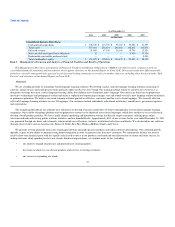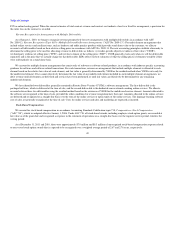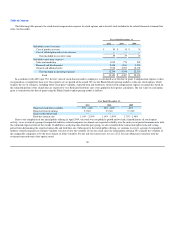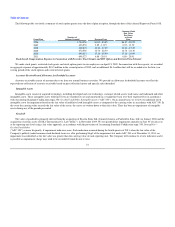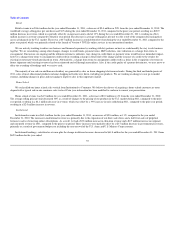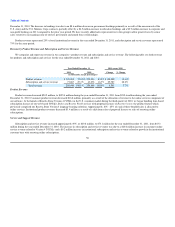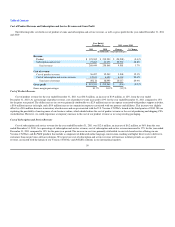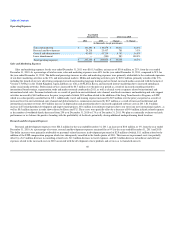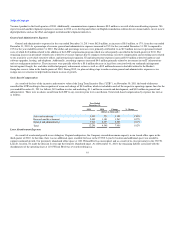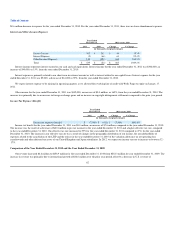Rosetta Stone 2011 Annual Report Download - page 55
Download and view the complete annual report
Please find page 55 of the 2011 Rosetta Stone annual report below. You can navigate through the pages in the report by either clicking on the pages listed below, or by using the keyword search tool below to find specific information within the annual report.
Table of Contents
Goodwill impairment is tested using a two-step process that begins with an estimation of the fair value of each reporting unit. The first step is a screen
for potential impairment by comparing the fair value of a reporting unit with its carrying amount. The second step measures the amount of impairment loss, if
any, by comparing the implied fair value of the reporting unit goodwill with its carrying amount.
In estimating fair value of our reporting units, we compared our market capitalization of our common stock, distributed between the reporting units to the
equivalent carrying value (total assets less total liabilities) of such reporting unit.
These techniques included the income approach (i.e., the discounted cash flow method) and the market approach (i.e., the guideline public company
method). Using our adjusted EBITDA projections is a judgment item that can significantly affect the outcome of the analysis, both in basing the allocation on
the most relevant time period as well as in allocating fair value between reporting units. As a result of a limited ability to derive future cash flow estimates
from historical experience based on internal business plans, which include consideration of industry trends, competitive actions, technology changes and
changes in underlying cost structure, we applied only the guideline public company method in estimating the fair value of our reporting units as of
December 31, 2011. Based on the fair value calculation, the fair value of the consumer and institutional reporting units exceeded the carrying value by 5% and
22%, respectively. The factors that we consider important, and which could trigger an impairment review, include, but are not limited to: a significant decline
in the market value of our common stock for a sustained period; a material adverse change in economic, financial market, industry or sector trends; a material
failure to achieve operating results relative to historical levels or projected future levels; and significant changes in operations or business strategy.
Valuation of Long-Lived Assets
In accordance with Accounting Standards Codification topic 360, Accounting for the Impairment or Disposal of Long-lived Assets ("ASC 360"), we
evaluate the recoverability of our long-lived assets. ASC 360 requires recognition of impairment of long-lived assets in the event that the net book value of
such assets exceeds the future undiscounted net cash flows attributable to such assets. Impairment, if any, is recognized in the period of identification to the
extent the carrying amount of an asset exceeds the fair value of such asset. Based on our analysis, we believe that no impairment of our long-lived assets was
indicated as of December 31, 2011 and 2010.
Income Taxes
For the years ended December 31, 2011, 2010 and 2009, we accounted for income taxes in accordance with Accounting Standards Codification topic
740, Income Taxes ("ASC 740"), which provides for an asset and liability approach to accounting for income taxes. Deferred tax assets and liabilities
represent the future tax consequences of the differences between the financial statement carrying amounts of assets and liabilities versus the tax bases of assets
and liabilities. Under this method, deferred tax assets are recognized for deductible temporary differences, and operating loss and tax credit carryforwards.
Deferred tax liabilities are recognized for taxable temporary differences. Deferred tax assets are reduced by a valuation allowance when, in the opinion of
management, it is more likely than not that some portion or all of the deferred tax assets will not be realized. The impact of tax rate changes on deferred tax
assets and liabilities is recognized in the year that the change is enacted.
ASC 740 requires a reduction of the carrying amounts of deferred tax assets by a valuation allowance if, based on available evidence, it is more likely
than not that such assets will not be realized. Accordingly, the need to establish valuation allowances for deferred tax assets are assessed periodically based on
the ASC 740 more-likely-than-not realization threshold criterion. In the assessment,
52



